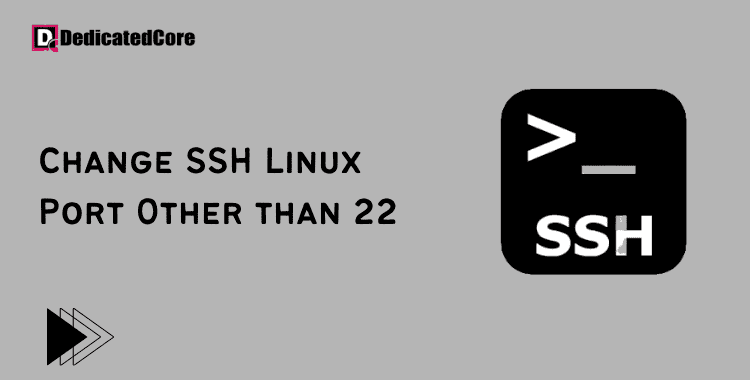A popular network protocol called SSH (safe Shell) enables safe remote server control and access. SSH typically uses port 22 for operation. For improved security and to prevent potential port scanning attacks, it may be required to configure SSH to utilize a different port in some circumstances. In this article, we’ll look at the benefits of switching the SSH port and walk you through the process step-by-step.
A robust protocol used for safe remote access to servers is called SSH (Secure Shell). SSH communicates by using port 22 by default. In some circumstances, you might need to configure SSH to utilize a different port to increase security or get past network limits. In this blog post, we’ll examine the benefits of employing a non-standard SSH port and lay out a step-by-step procedure.
Reasons to Change Your SSH Port:
Security Improvement: Changing the default SSH port gives your server an extra degree of protection. For brute-force attacks, criminal actors and automated bots frequently target port 22. You can make it more difficult for them to locate and utilize your SSH service by choosing a non-standard port.
Network Policies or Restrictions: The default SSH port may be limited or blocked in some network situations, such as business networks or open Wi-Fi hotspots. You can get around these restrictions and still make SSH sessions by changing to a different port.
Compliance or Regulatory Requirements: Security audits or regulatory requirements may suggest or demand the use of non-standard SSH ports as part of a security policy in particular industries or organizations. The SSH server typically operates on port 22. There are times when it is run in a different port, though. When running the ssh command on Linux, the -p port> option allows you to specify the port number to connect to.
For instance, type: to connect to a remote server that listens on port 2222.
ssh -p 2222 user@host
Changing the SSH Server Port
Although the sole cybersecurity precaution most remote server users take is to have a strong and secure password, extra security measures are always advised.
Changing the SSH port from 22 to another is a quick but effective way to increase the security of your server. Nevertheless, you can modify the server’s port number to suit your needs.
#Port 22
You must modify particular settings in the sshd_config file to utilize ssh on a port other than 22 on your server.
The line must first be uncommented by deleting the hash (#) and replacing 22 with the new port number you want. After that, save your modifications and close the text editor.
Time to Restart the SSH service from Now.
systemctl restart sshd
Your SSH server will stop receiving automatic attacks if the port is changed, and it will be less likely to be the target of a random scan. In other words, finding your server is now more challenging, and you can prevent being scanned randomly.
Final Thoughts…
You can strengthen server security and get around any network limitations by changing the default SSH port to a non-standard value. You may easily set up SSH to utilize a port other than 22 by following the step-by-step instructions provided in this blog post.
Prior to implementing the new configuration in a live system, don’t forget to select an open port and test it. Be proactive in protecting your server, and make sure the SSH connection is secure and trustworthy. With the help of this, you may get clear views on SSH to port over 22 with this understand ftp port number.

